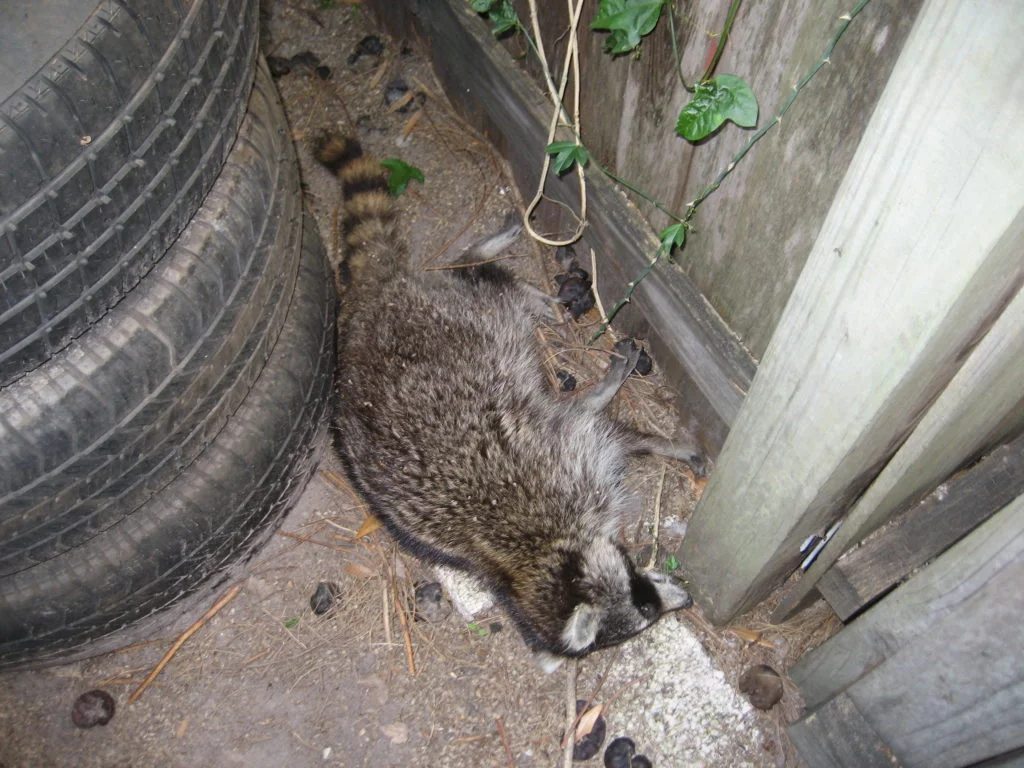
Discovering a dead raccoon in yard can be a disturbing experience. Raccoons are common creatures, but finding one deceased on your property raises concerns about safety and sanitation. It’s important to remember that handling a dead raccoon improperly can pose health risks due to potential diseases. This guide will provide you with a comprehensive understanding of how to safely remove and dispose of a dead raccoon in your yard.
This article will walk you through the necessary steps, from identifying the situation to contacting the appropriate professionals. We’ll cover the importance of disease prevention, safe disposal methods, and the best practices for handling this delicate matter.
Dead Raccoon in Yard
The first step is to confirm that the animal is indeed a raccoon. While raccoons are known for their distinctive bandit masks, it’s always best to be certain. Observe the animal’s size, shape, and other identifying features. If you’re unsure, consult online resources or contact your local animal control for assistance.
Once you’ve confirmed it’s a raccoon, assess the situation. Is the raccoon in a location that poses a risk to people or pets? Is it near a food source or water supply? If so, it’s crucial to take immediate action to prevent further contamination.
Raccoon Removal

Removing a dead raccoon requires caution and protective gear. Wear thick gloves, long sleeves, and pants to minimize contact with the animal’s fluids. Avoid touching your face or eyes while handling the raccoon. If possible, use a shovel or sturdy stick to move the raccoon into a secure container, such as a heavy-duty plastic bag.
If the raccoon is in a difficult-to-reach location, consider using a rake or broom to gently push it into a container. Avoid dragging the raccoon across the ground, as this can spread potential contaminants.
Disinfecting the Area
After removing the raccoon, thoroughly disinfect the area where it was located. Use a solution of bleach and water (one part bleach to ten parts water) to clean and sanitize the ground. Pay attention to any areas where the raccoon may have come into contact with surfaces.
Allow the disinfectant solution to sit for at least ten minutes before rinsing it away with clean water. This will help to eliminate any potential pathogens.
Disease Prevention
Raccoons can carry various diseases that are transmissible to humans and pets. These include rabies, leptospirosis, and roundworm. It’s essential to take precautions to prevent exposure to these diseases.
Avoid direct contact with the raccoon’s body fluids, such as saliva, urine, or feces. If you come into contact with any of these fluids, wash your hands thoroughly with soap and water for at least 20 seconds.
Vaccination
Ensure that your pets are up-to-date on their vaccinations, including rabies. This will help to protect them from potential exposure to diseases carried by raccoons.
If you have any concerns about your pet’s health after potential exposure to a dead raccoon, consult your veterinarian immediately.
Safe Disposal

Proper disposal of a dead raccoon is crucial to prevent the spread of disease. Do not bury the raccoon in your backyard, as this can contaminate the soil and groundwater.
Contact your local waste management services or animal control for guidance on safe disposal methods. They may have specific guidelines or designated collection points for deceased animals.
Professional Removal
In some cases, it may be necessary to contact a professional wildlife removal service to handle the disposal of the dead raccoon. These services have the experience and equipment to safely remove and dispose of the animal in accordance with local regulations.
Contacting Professionals
When in doubt, it’s always best to err on the side of caution and contact the appropriate professionals. Your local animal control or waste management services can provide guidance on safe removal and disposal practices.
They can also answer any questions you may have about potential health risks and disease prevention. Don’t hesitate to reach out for assistance if you encounter a dead raccoon in your yard.
Conclusion
Finding a dead raccoon in your yard can be a distressing experience, but it’s important to handle the situation responsibly. By following the steps outlined in this guide, you can safely remove and dispose of the animal while minimizing the risk of disease transmission. Remember to prioritize your safety and the well-being of your family and pets. If you have any concerns or require assistance, don’t hesitate to contact your local animal control or waste management services.
